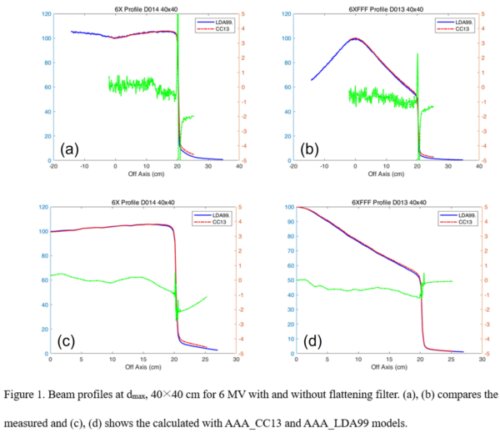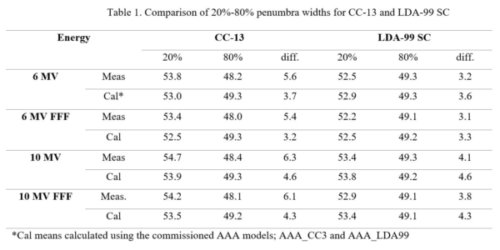Feasibility of a linear diode array detector for commissioning of radiotherapy planning system
Byungchul Cho,
Korea Republic of
PO-1753
Abstract
Feasibility of a linear diode array detector for commissioning of radiotherapy planning system
Authors: Byungchul Cho1, Seung Mo Hong2, Tae Hoon KIm2, Youngmoon Goh2, Sung-woo Kim2, Uiseob Lee2, Min-Jae Park2, Chiyoung Jeong2, Jungwon Kwak2
1Asan Medical Center, University of Ulsan College of Medicine, Radiation Oncology, Seoul, Korea Republic of; 2Asan Medical Center, Radiation Oncology, Seoul, Korea Republic of
Show Affiliations
Hide Affiliations
Purpose or Objective
Accurately measured beam data is essential for accurate modeling of treatment planning system which is an essential component of radiotherapy. Ionization chambers with ~0.1-cc volume are typically used for beam data measurements including depth dose curves, lateral profiles, and output factors, However, point-by-point measurements with ion chambers are not simple for all the profiles with various field and depths and therefor linear array detector would be preferred. In this study we investigate the feasibility of a linear diode array for commissioning a treatment planning system.
Material and Methods
The beam data of a Varian TrueBeam 6MV, 10MV, 6MV FFF, and 10MV FFF were measured for commissioning of Eclipse AAA ver15.6. All the necessary beam data were measured using and ionization chamber (IBA, CC-13) and validated with Varian Golden Beam data. After validation, the CC-13 measured data were used for commissioning Eclipse AAA (AAA_CC13). In addition, all the beam profiles were measured using a linear diode array (IBA, LDA-99) and used for commissioning a separate model (AAA_LDA99). Finally, dose distributions of 10 clinical plans were calculated using AAA_CC13 and AAA_LDA99 and then compared.
Results
The agreement of the CC-13 profiles with Varian Golden Beam data is confirmed within 1% except the penumbral region where upto 2% of discrepancy is observed due to machine-specific jaw calibration. As shown in Fig. 1, LDA-99 profiles agree with those of CC-13 within 1%, but slightly underestimate as increasing off-axis distance. This underestimation effect seems to be slightly larger in the 6X flattening-filter beam than the 6X FFF beam. It may be explained that LDA-99 has low-energy metal compensator to reduce over-response of diode detector due to low energy scatter. Since FF beam becomes softened as off-axis distance, the LDA-99 overcompensation effect more in FF beam than FFF beam. Since CC-13 has larger volume than that of LDA-99, the penumbra width are larger in the CC-13 profiles, resulting upto 5% of difference. However, after beam modeling the difference is reduced, as summarized in Table 1. Finally dose distributions of AAA_LDA99 agree with those of AAA_CC13 within 1% for all voxels inside the body for 10 clinical plans.


Conclusion
Compared to a reference detector for beam commissioning, an ionization chamber of CC-13, the measured beam data using a diode array detector, LDA-99 shows a slight underestimate the profiles but better spatial resolution due to small sensitive volume . The difference is further reduced after beam modeling of Eclipse AAA photon calculation. Final dose comparison with clinical plans shows little difference. Therefore, in conclusion, diode array detector, LDA-99 is an accurate and efficient detector for measurement of photon beam profiles for commissioning of treatment planning system.